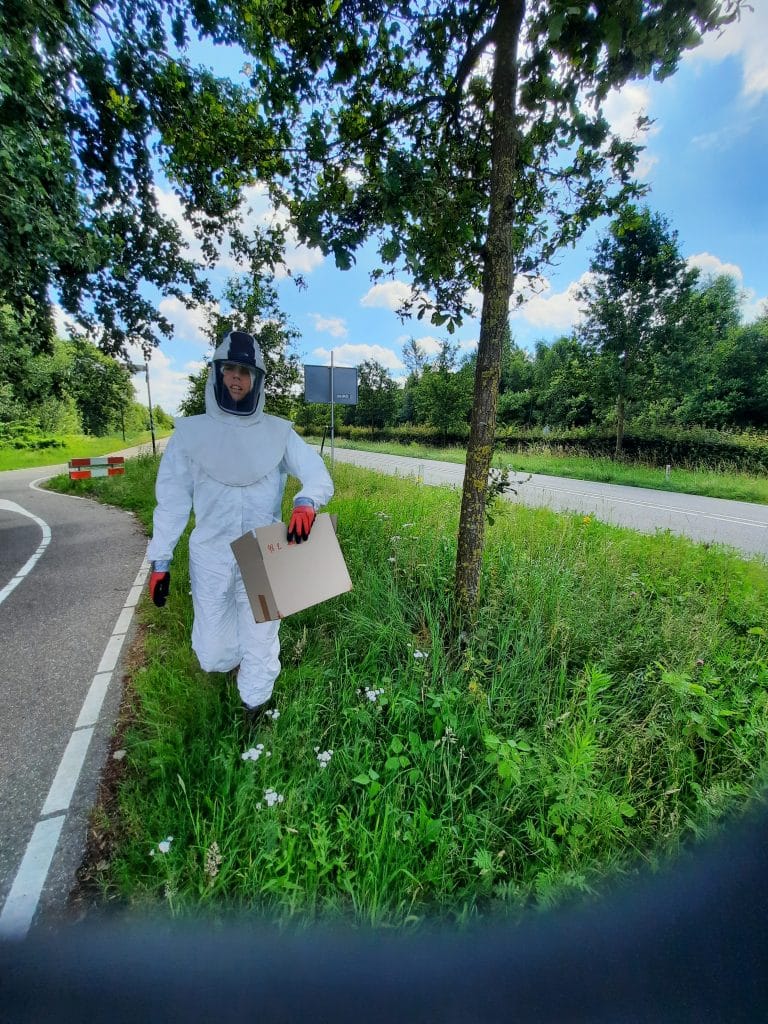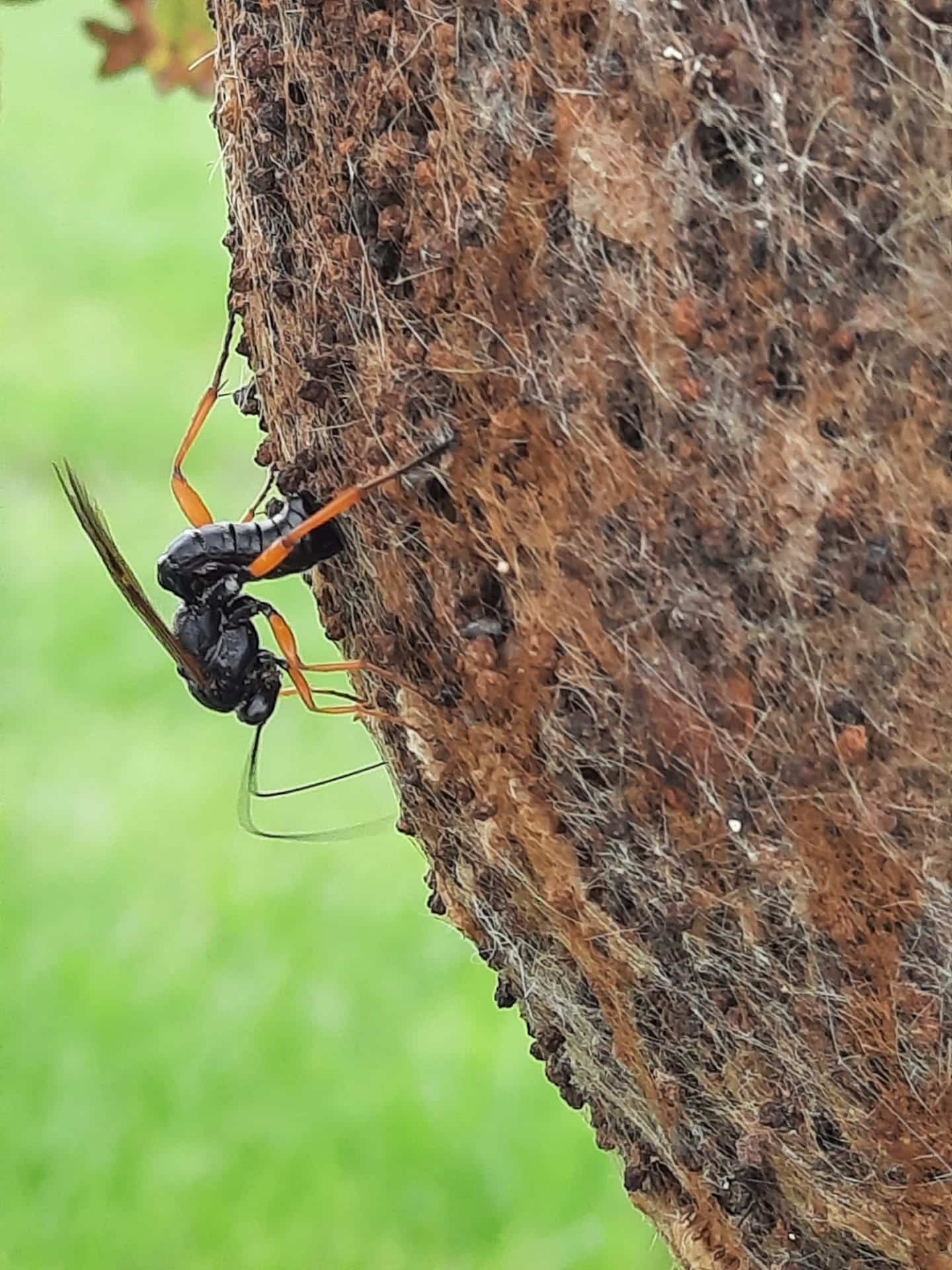Up to 3 times fewer oak processionary caterpillars thanks to parasitoid wasps and flies
Initial results show that an average of 67% of the caterpillars are killed by parasitoid wasps and flies. A good result for the project, which investigates how to use natural enemies to keep the caterpillar under control.
In the summer of 2021, 3 caterpillar nests were collected at more than 40 locations in Flanders and the Netherlands and then bred out for a whole year. That way we could also monitor the parasites that don’t fly out until the following spring. The breeding took place in a lab in the Provincial Nature Center (PNC) in Limburg.

Up to 3 times fewer caterpillars
An average of 36 oak procession butterflies flew out of the collected nests. In addition to these butterflies, an average of 60 parasitic flies and 2 parasitic wasps emerged from each nest.
If we assume that 1 fly or wasp parasitizes 1 caterpillar, that is 62 fewer butterflies per nest. From 97 to 36 butterflies: thanks to the parasitic wasps and flies, we will have almost 3 times fewer caterpillars next season!
We also learned that there are large differences in the degree of parasitization between the participating provinces. While about 60% of the caterpillars were parasitized in Antwerp, Limburg and Gelderland, in North Brabant this was no less than 91%. In addition, there were more parasitic wasps in North Brabant than in the other provinces, but parasitic wasps there generally only accounted for 3% of the total number of parasites.

Flowery or grassy verges for parasitic wasps and flies?
In the LIFE project we want to use this knowledge to define a more sustainable strategy to manage the oak processionary caterpillar. By investigating the type of vegetation in which parasitic wasps and flies occur most and which type of roadsides are most favorable (flowery, grassy, with or without shrubs, etc.), we hope to be able to keep the oak processionary caterpillar under control in the long run without using pesticides.
